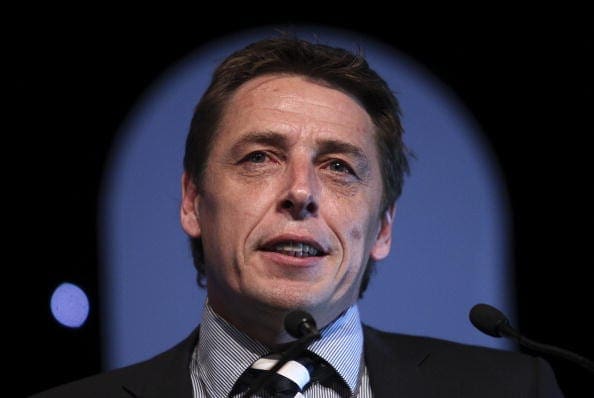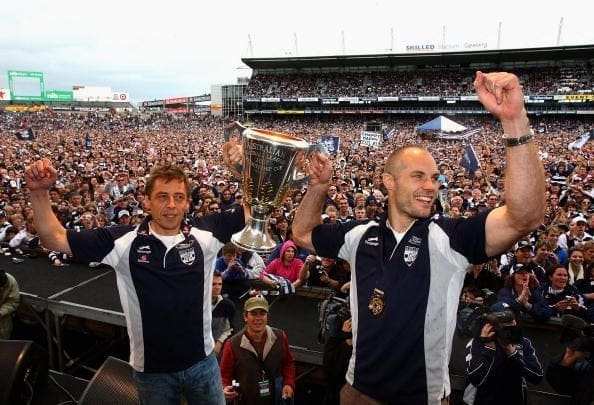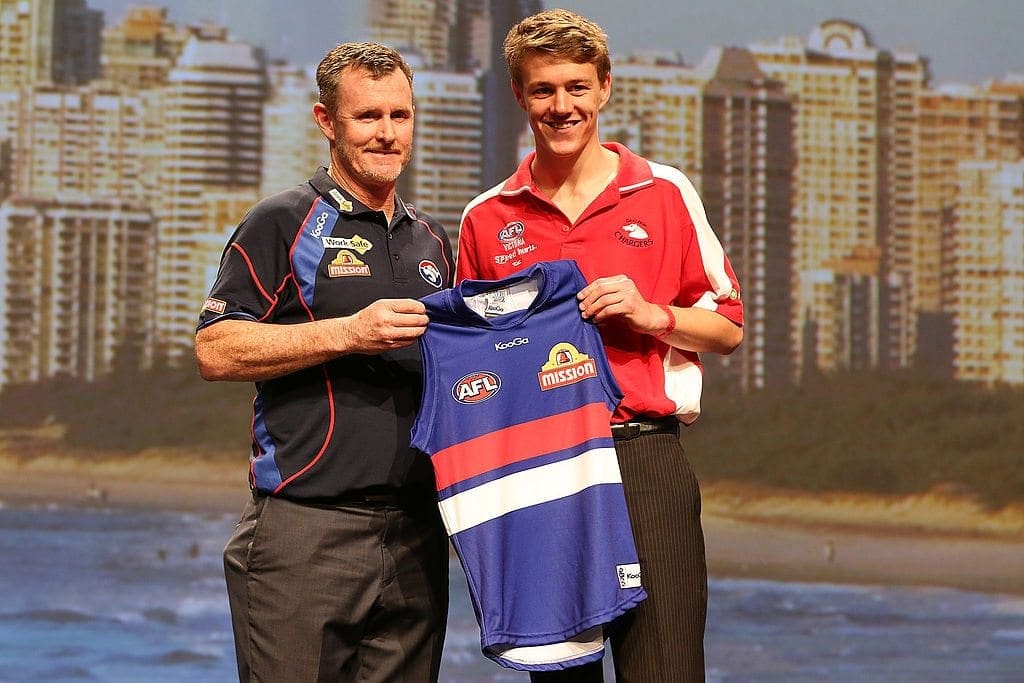Regrets are an inevitable part of life. They come with the territory of breathing and are a part of the unwritten deal we all sign for the right to exist.
Although some contrition can feel enormous – such as the misery born when a relationship breaks down or after committing a far more criminal act – others are forgotten in the blink of an eye.
In terms of the unpredictable game of football, there are a plethora of scenarios that have made or broken careers.
What if your side picked a different player from a certain draft?
What if your star spearhead had kicked straight when it mattered?
What if a drought-breaking coach was ushered out early?
Well, for fans of every creed we have sought to answer the question that has rankled you for years and kept you up at night for far too long.
We can't promise that we won't open old wounds, as let's face it, that is the entire point of the exercise.
From Adelaide to the Bulldogs, from Fitzroy to the Bears, here are every club's biggest 'what if' moments since the dawn of the AFL era in 1990.
OTHER WHAT IFS: Adelaide, Brisbane Bears, Brisbane Lions, Carlton, Collingwood, Essendon, Fitzroy, Fremantle
Strap yourselves in, Cats fans, it's now your turn.
What if Bomber Thompson was shown the door at the end of 2006?
Often in life, it's the moves we don't make that leave us racked with regret. Some may be as small as rising late and finding yourself as the last in line for a share house shower, whilst others can have far more life-altering ends.
However, in Geelong's case, it was a decision to sit on their hands at the end of 2006 that saw them breathing lengthy sighs of relief just 12 months later.
Although 2006 would end in disappointment, it was the Hoops' fast start that had punters and pundits scratching their heads as to why it all fell apart at the seams well before September.
After claiming the 2006 NAB Cup – remember, this was a time when clubs actually cared about pre-season results – against the Crows on enemy soil, the Cats continued their rampant form across the first fortnight of the regular season, destroying Brisbane and North Melbourne by a combined total of 24 goals.
With a 2-0 record and a gargantuan percentage of 236.4, the Cats were purring.
Still, if you fast-forward past their next 20 appearances, Geelong could be found in 10th position with a percentage of 99 by the regular season's cessation.
But how could this be for a side that not only started the brightest, but one that also made finals runs in the two seasons prior?
The starting point for Geelong's annus horribilis of the mid-2000s came between Rounds 3 and 6, when they dropped four games in a row and slid out of the eight – a position they would never reclaim at any stage throughout the year.
Following the curtains closing on a 10-1-11 season, the heat - both internally and externally - was directed at one man, the head coach, Mark ‘Bomber' Thompson.

At the end of 2006, ‘Bomber' may have held a 48.75% win rate across his 160 games calling the shots at the Cattery, but with a star-studded squad underperforming, there was a view that a head needed to roll for the Cats to finally break their ceiling.
To truly gain an appreciation for the strength of the ceiling, we need to wind the clock hands back a further seven years to the end of the last millennium.
In 1999, the Cats were a mess. With the club mired in mediocrity on the field and up to their neck in debt off it. The writing, it seemed, was on the wall for the league's second-oldest side.
According to Jake Niall of The Age, Geelong was more than $9 million dollars in the red, with six of that owed to the bank.
Seeking to rectify these dual issues immediately, club president Frank Costa appointed former Eagles powerbroker Brian Cook as CEO and Thompson was hired to replace the out-going Gary Ayres.
As the suits sorted the finances in due course, the remainder of this newly formed trinity was still to uphold his end of the bargain, but prior to the 2003 season, Thompson dialled the thermostat up on himself by claiming that Geelong would enter their premiership at the commencement of 2006.
For this reason, it was understandable that many were once again ushering in the winds of change following another year of teasing turned into torture.
Nevertheless, history shows that Geelong's decision to employ consultants ‘Leading Teams' and Costa's choice to stick with ‘Bomber' saw the premiership drought broken after more than four decades.
Still, one wonders what would have happened if Costa and his board had itchy trigger fingers instead.
Without Thompson, would the Cats have gone on to become one of the greatest teams of the modern era, or would have the status quo of disappointment and cobwebs in the trophy case have continued?
When analysing this hypothetical scenario, a pair of factors must be considered.
Firstly, was the club's roster still strong enough to have claimed a flag in 2007 without Thompson?
And secondly, who were the names most likely to fill the vacant coaching role? Were they up to the task of leading a list of strong personalities such as Mooney, Chapman, Johnson and Scarlett?

The first of these queries appears incredibly easy to answer, with the Cats claiming the '07 flag by a record margin of 119 points over a powerless Port Adelaide side.
When pondering the second factor, another question needs to be raised: Would Costa and Cook have been promoted from within to fill Thompson's seat, or would they have looked further afield?
If the first path was the one taken, then the eligible group of candidates would have been comprised of Andy Lovell, Brendan McCartney, Leigh Tudor and Ken Hinkley.
If the second route was selected, then Ross Lyon could have been seen as the preferred hiring prior to his start with the Saints in 2007.
However, if the Cats had elevated a name that already prowled within their four walls, then a quick power ranking from least to most likely to earn the job would have likely read the exact same as already listed – Lovell, McCartney, Tudor and Hinkley.
As Lovell departed the Cattery at the end of '06, his name was an early scratching from the race, and as McCartney had minimal coaching credits in the bank at that stage, he would have certainly been considered the short field's roughie.
Hindsight also tells us that McCartney's head coaching ability was debatable at best, as seen during his tumultuous tenure at the Kennel between 2012 and 2014.

Having played 60 games with the club between 1993 and 1996, Leigh Tudor was surely familiar with the importance of the Cats within the city, as well as the head coach's role.
A brief look across Tudor's coaching posts shows that aside from the 2007 VFL premiership he later led the Cats to, the now 51-year-old also spent time with the Saints and Swans when both clubs were roaring successes.
As nobody is in the right place at the right time that often, it is clear that the Doutta Stars product had more than just a bit of ability.
For this reason, one can argue that Tudor would have made a fine coach had he been given the opportunity.
Hinkley, another member of the Cats' mid-90s alumni, has also gone on to carve out a successful coaching career after departing the Cats, with his current win rate sitting at an impressive 59.69% with the Power.
Still, would either part of this pairing have been able to get the job done?
As blunt as it sounds, we are of the belief that either Tudor or Hinkley could have achieved what Thompson did in 2007, simply because the players they would have been leading were borderline unstoppable - as evidenced by their averaging winning margin of more than 54 points across their 21-wins.
The role of a coach is often embellished when it shouldn't be, just as they are diminished out of turn. But as mentioned on a myriad of occasions already, any list that contained Ablett, Bartel and company would have broken the Cats' drought at the precise moment they did in reality.
However, whether they would have gone on to create one of the game's greatest modern dynasties is another question altogether.
























